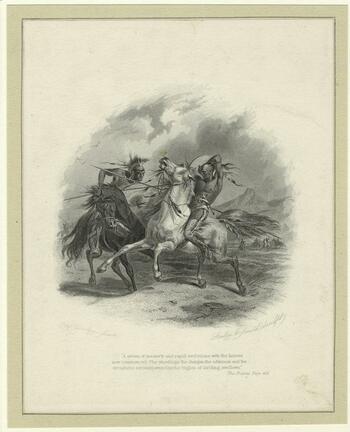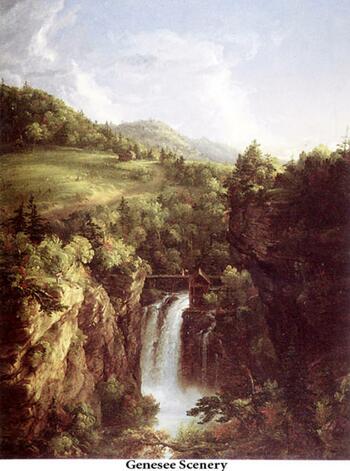Not everyone saw the Erie Canal as a positive change for New York State or the nation. Art and literature reflected a growing disillusionment with the ways commercialization and industrialization were changing the natural landscape and culture of America.
The artists of the Hudson River School, including Albert Bierstadt, Thomas Cole, Asher Brown Durand, and Frederic Edwin Church, were primarily landscape painters who attempted to capture the romance of nature and untamed wilderness that had characterized America before the intrusion of civilization. Their work reflected America’s nineteenth-century focus on the exploration and settlement, and resisted portrayals of booming urban areas, populations, and industries.
This “wilderness” theme was also popular around this time, particularly as depicted in the work of New York native James Fenimore Cooper. His Leatherstocking Tales, a series of adventure novels about pioneer days in upstate New York, look back to a simpler way of life that vanished with population growth, industrial development, and the loss of substantial Native American presence in New York. Cooper’s popular stories painted a picture for readers of New York during a wild and romantic frontier period and continued in his novel The Last of the Mohicans.
This illustration is from The Prairie: A Tale (1827), the fifth and final book in James Fenimore Cooper's Leatherstocking Tales, depicting complex and contrasting views of the American frontier. Courtesy of The New York Public Library.
This painting is Genesee Scenery (1847) by Thomas Cole. Cole was one of the leading painters of the Hudson River School, which was named for the New York location in which many of these painters lived and were inspired to depict romantic views of the natural American landscape. Courtesy of Brigham Young University - Harold B. Lee Library via Mountain West Digital Library.

